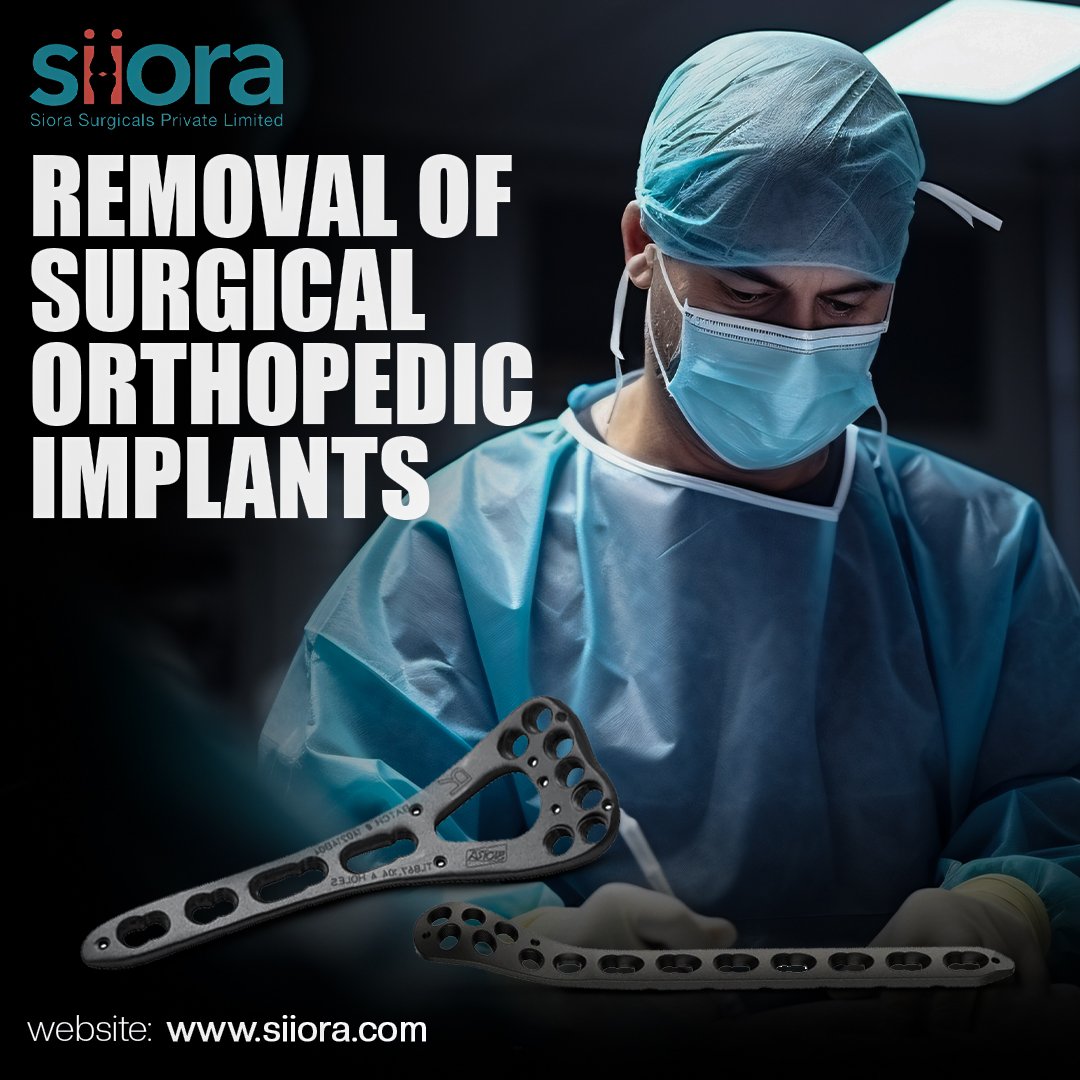Orthopedic surgery often involves implants to treat damage to a bone. Orthopedic Implants may also be used for reconstructing an injured joint, repairing a fractured bone, or changing the skeletal alignment. Implants help broken bones heal in the correct alignment. However, in some cases, orthopedic implant removal is required. Let us see what it is and when implant removal is required.
What is Orthopedic Implant Removal?
Orthopedic implants are metal devices like plates, orthopedic screws, rods, or nails used to stabilize fractured bones. These implants help hold bones in position as they heal and are usually made from biocompatible materials such as stainless steel or titanium. While most implants are designed to stay in the body permanently, there are instances where they need to be removed. Orthopedic implant removal is a surgical procedure that involves taking out previously inserted hardware after a bone has adequately healed or when complications arise.
Why Orthopedic Implant Removal Is Required?
Although many patients live comfortably with implants for life, certain medical or personal reasons may call for their removal. Below are common reasons why implant removal becomes necessary:
Pain or Discomfort
Some patients may experience chronic pain or irritation around the site of the implant, especially in areas with less soft tissue coverage, like the ankle or wrist.
Infection
Infections near the implant can become serious if not addressed. Removal may be necessary to fully eradicate the infection.
Allergic Reactions or Metal Sensitivity
Though rare, some individuals develop allergic responses to the metal used in implants.
Implant Failure or Loosening
Over time, hardware may break, shift, or loosen, especially if the bone does not heal as expected.
Growth in Children
In pediatric patients, implants can interfere with natural bone growth and may be removed after healing to avoid complications.
Patient Choice
Some patients prefer to have the implant removed after healing due to personal comfort or psychological reasons.
It’s important to note that not all discomfort or sensations from implants require removal. The decision is best made in consultation with an orthopedic specialist after careful assessment.
Orthopaedic Implant Removal Surgery Procedure
The process of removing an orthopedic implant is typically less complex than the original fracture fixation surgery, but it still requires careful planning. Here’s what you can expect:
1. Preoperative Assessment
X-rays, blood tests, and a physical evaluation are conducted to determine if removal is necessary and feasible. The surgeon checks whether the bone has healed completely and whether the removal poses any risks.
2. Anesthesia
Depending on the complexity and site of the implant, general or regional anesthesia may be administered to ensure patient comfort.
3. Surgical Removal
The surgeon reopens the area where the implant was inserted, carefully avoiding nerve or tissue damage. Specialized tools are used to remove the screws, rods, or plates.
4. Closure and Recovery
Once the hardware is removed, the incision is closed with sutures or staples. Recovery typically involves a shorter healing period compared to the original surgery. However, some discomfort, swelling, or bruising is expected for a few days.
5. Postoperative Care
Patients may need physical therapy, especially if the implant was in a weight-bearing joint. Follow-up visits ensure proper healing and functionality of the bone and surrounding tissues.
While implant removal is generally safe, it carries risks like any surgery, such as bleeding, infection, nerve damage, or refracture. Therefore, it should be done only when clinically necessary.
What Are the Types of Orthopaedic Implant Removal?
Different types of orthopedic implant removal exist based on the implant’s design, location, and the original injury. Here are the most common categories:
Superficial Implant Removal
These involve small implants placed just under the skin, such as those used in hand or foot surgeries. Removal is usually simple and done as a day-care procedure.
Deep Implant Removal
Implants located in deeper areas, like the hip or thigh, require more extensive surgery and possibly an overnight hospital stay. These include femoral nails, intramedullary rods, and large plates.
Selective Removal
In some cases, only part of the hardware needs removal, for instance, when one or two screws cause pain, but the rest of the implant is fine.
Emergency Removal
When complications like infection or implant failure arise suddenly, urgent removal may be needed to prevent further damage.
The type of removal procedure depends on the implant’s size, shape, and location, as well as the patient’s health and healing status.
Final Thoughts
Orthopedic implant removal is a decision that should always be made with proper medical guidance. While modern implants are designed to remain in place permanently, certain conditions make removal necessary. Understanding why and how implants are removed helps patients make informed decisions about their recovery journey. If you’re experiencing discomfort or are unsure about whether your implant should stay or go, consult with a qualified orthopedic surgeon. Your comfort, mobility, and health are worth every thoughtful step.







